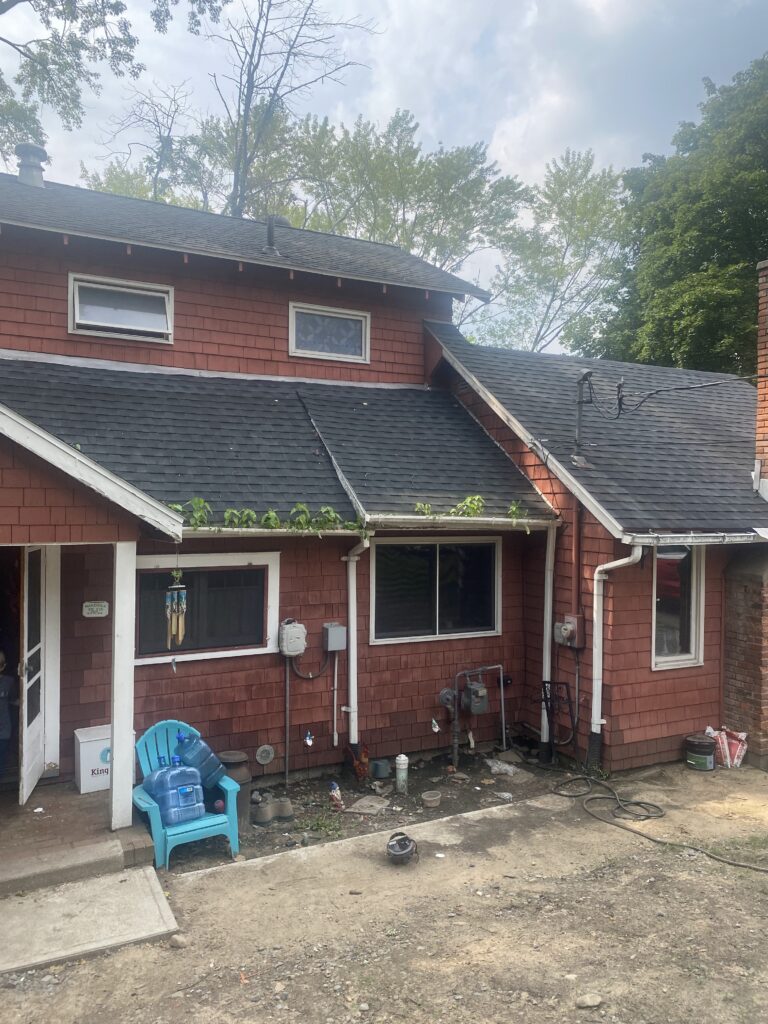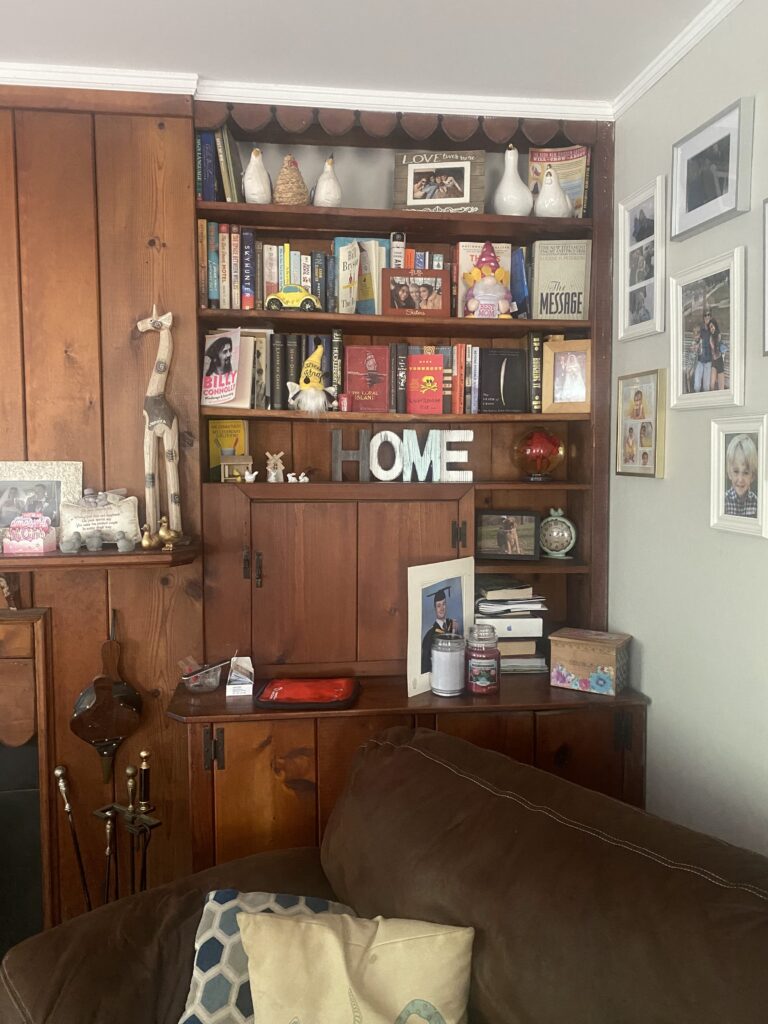Kurt Vonnegut’s House Is Not Haunted
In my earliest childhood memories—the big blur we will call the gear shift between the twentieth and twenty-first centuries—Schenectady, the city I was born in, is a distant star. Fuzzy, soft, a blurred edge that feels so far away in the way that childhood always feels so far away. Schenectady, the city I was born in, is a small upstate city between the rivers Mohawk and Hudson. Home of the perfect 12345 zip code. The location of the General Electric Power headquarters. Girls wearing low-rise jeans to rent VHS tapes at the Hollywood Video on Balltown Road. Street names: Brandywine, McClellan, Union, Glenwood Boulevard, Nott, Van Vranken. A white clapboard church hovering atop a hill on a rural route—I used to take modern dance classes there. An ice-skating rink next to an Air Force base where the pilots flew to Antarctica, always flying so low when they went over my house. NXIVM ladies planning their volleyball trips to Lake George. My parents knew the exact address of where the Unabomber’s mother and brother lived, in a historic district called the Stockade. And as for me, I do not remember when I first registered that Kurt Vonnegut lived in Alplaus, a small hamlet in Schenectady County, named after the Dutch expression aal plaats, which means “a place of eels.” (There were no eels that I am aware of.) I think it was in high school. I think my hair was cut short. I think it was when I was a virgin. I think it was when I got a job as a bookseller at the Open Door on Jay. I think I was probably sixteen.
I already loved Kurt when I found out that for a few years after World War II he lived an eight-minute drive from the house I grew up in. As a teenager in Schenectady, I read not all but most of his books. It was because of my father, who also loved Kurt. He gave me a copy of Slaughterhouse-Five, and it was the first time that I fell in love with a novel, because it was brutal and hilarious and weird and terrifyingly sad. Slaughterhouse-Five is set in Dresden and Luxembourg and Outer Space and also Ilium, New York. Ilium, it is argued by most Vonnegut readers and scholars, is probably Schenectady. It appears in several of his other books. Player Piano, Cat’s Cradle, and a few different short stories. Here is how Ilium is referenced, in one passage of the Slaughterhouse-Five: “Billy owned a lovely Georgian home in Ilium. He was rich as Croesus, something he had never expected to be … In addition he owned a fifth of the new Holiday Inn out on Route 54 and half of three Tastee Freeze stands.”
Billy Pilgrim is the protagonist of Slaughterhouse-Five and a guy who will live in a human zoo later in the novel. Unlike Billy Pilgrim, Kurt Vonnegut did not own a lovely Georgian home. He was there, in Schenectady, because he got a job at General Electric’s corporate campus, working in the publicity department. Working at GE got him into writing science fiction. “There was no avoiding [writing science fiction],” he said in an interview, “since the General Electric Company was science fiction.” During his time at GE, he wrote Player Piano, his first novel. His thing is that he wanted to just do that full time. Write books. But he wasn’t ready to do that full time yet, thus the job. So Vonnegut moved into the house, not far from the GE campus, in Alplaus, a middle-class hamlet on the Alplaus Creek and Mohawk River.
In August, I decided to drive to the house for the first time. I did this with my father, because he was the one who gave me Slaughterhouse-Five, and also because he’s now semi-retired and agreed in advance that it would be “funny,” and “cool,” to accompany his twenty-seven-year-old daughter on a “reporting trip” four miles down the road from his house. “Did you know he lived in Schenectady before you moved here?” I asked my father. “No, I don’t think so,” he responded. Out the window: my former elementary school and preschool, the Chinese Fellowship Bible Church, anonymous corporate campuses, new housing developments that when I was a kid were huge, empty fields.
Vonnegut’s house, which I found by googling “Vonnegut’s house Schenectady NY,” is set directly overlooking Alplaus Creek, on a quiet side street. It is kind of in the woods. Lots of big trees on the street. The houses are old but not old. None of them are big. A few of them have big campers and ATVs out front, and the occasional snow mobile. Old cowboy boots used as planters and wind chimes. Vonnegut’s house is red, slightly set back from the road. It has seen better days, but it is kind of charmingly shabby, overgrown with plants spilling out of the gutters. No plaque. It is not marked in any way. There is a camper parked in front, empty water coolers lying on the front porch, and an early aughts VW bug in the driveway. It remains a private residence. When my father and I showed up, we basically hid behind the camper for a few minutes. He narrated the scene out loud. “Alplaus, New York,” he said, “where the state bird is the mosquito!” I sat there in silence on account of being shy.
Thus: I failed to stop my father from talking to the pink-haired teenage boy who saw us basically hiding behind his parents’ RV.
Thus: “Do you know that Kurt Vonnegut used to live in this house?” my father said to the teenage boy with pink hair.
“Uh, yeah,” he said.
“Do you have people stop by your house all the time asking about Kurt Vonnegut?” my father continued.
“Sometimes,” the teenage boy responded.
The boy’s father came outside, probably because he saw him chatting with a strange middle-aged man and his sullen adult daughter. The boy’s father was a man named David Lovelady, from Liverpool, England. He was very friendly. Excited to talk to us about Kurt Vonnegut’s house, shepherding us onto his front lawn and introducing us to his three chickens. David did not know he had purchased Kurt Vonnegut’s house until he and his wife had basically closed on it. He had found out that Kurt Vonnegut lived in Alplaus, and when he googled it, he was delighted to discover that not only had Vonnegut lived in Alplaus, but he had lived in the very house that David and his wife had just bought!
His wife, Gail, came out; so did the rest of their kids. They asked if we wanted to see inside. The thing about the house, they told us, is that it was not haunted, because ghosts are not real, but also a copy of Player Piano, sitting face out on a bookshelf, kept falling on the head of one of their kids and as a result the family had this inside joke about it being Kurt’s ghost. Obviously, I wanted to see the haunted bookshelf so they showed me the haunted bookshelf. It looked pretty normal. Also facing out was a stuffed animal gnome holding a coffee cup that said “Best Mom,” and a book about raising chickens. I cannot stress enough that the house of Kurt Vonnegut is now just a completely normal house where people live and is full of completely normal things that appear in completely normal houses. Which to me makes a lot of sense. Vonnegut in my opinion is a charming and scrappy weirdo. He is not the kind of person you think of as living on some kind of grand estate.
David asked my father and me how we even knew the house was here. I told him I probably learned about it at the bookstore I worked at in high school, people would occasionally come in and ask about it. How in the early 2010s you still had a handful of people who did not know about the magic of Google Maps and therefore you had to physically give them directions. I tried to remember what this was like. To have once been a girl, age sixteen, telling people to “turn right onto Freeman’s Bridge.” To drive past the abandoned Alco factory that is now a casino where I was once forced to see a U2 cover band. The ice cream place, Jumpin’ Jacks, where they show fireworks on the Fourth. The banquet hall, the Glen Sanders, where we had my senior prom.
My father and I decided we had stayed long enough at the house. Our hosts were headed off on a trip to the coast. They (the Lovelady clan) suggested we go down the street to an old general store where Vonnegut had rented some office space, so we did that and took some more pictures. This part was not interesting. It involved my father and me doing some reconnaissance for about five minutes and then deciding we were done. Additionally, I was criticized for not taking iPhone photography in landscape mode. So we drove home, back to the house where I grew up. I logged on to the internet and I did some research about when Vonnegut left Schenectady. The answer was basically: as soon as he could. He moved to Cape Cod in 1951 to write full time, decamping to the village of Barnstable to a similarly unassuming but lovely small house.
He was not a very ostentatious guy. Of all of the places he lived, the most regal was a brownstone in Turtle Bay, a slim white home down the street from where E. B. White also once lived. Apparently he (Vonnegut) once almost burned down the house because he was obsessed with smoking inside. This to me is almost a comforting thought—Vonnegut carelessly lighting cigarettes inside of his abode. This makes sense to me, that he lived a little messily and not for show, because he is the kind of person who wrote beautifully and hilariously about being a person. He wrote science fiction novels that were not corny or ridiculous or dorky. Just in a way that feels extremely human, which, if you are writing all the time about outer space, is a triumph.
Sophie Frances Kemp is a writer in Brooklyn, originally from Schenectady, New York. She has published nonfiction in GQ, Vogue, and The Nation, and fiction in The Baffler and Forever. She has a forthcoming novel called Paradise Logic.
Copyright
© The Paris Review


